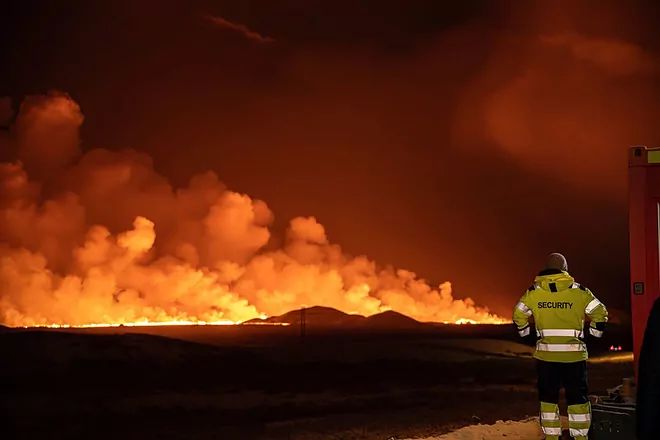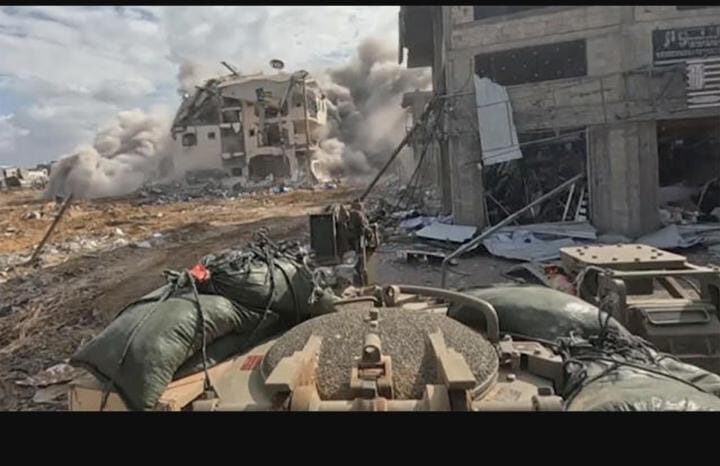
In a breathtaking display of nature’s might, Iceland’s Reykjanes Peninsula was engulfed by a volcanic eruption, following weeks of seismic activity, triggering evacuations and closures of renowned tourist destinations. The eruption, which commenced at approximately 10 p.m. local time, illuminated the night sky with bursts of lava and smoke, drawing attention worldwide to the volatile situation unfolding in this region.
The Icelandic Meteorological Office reported the eruption near Hagafell, merely 3 kilometers north of Grindavík, a town of over 3,000 residents. This eruption marks the fourth instance of volcanic activity in the area since 2021 and is notably the most extensive.
The tumultuous event prompted the evacuation of Grindavík and surrounding settlements in anticipation of potential volcanic hazards. Authorities had earlier issued an evacuation order, ensuring the safety of residents as the threat of the eruption loomed. The evacuation successfully cleared the town, allowing residents to seek safer grounds away from the path of the flowing lava. The area, a mere 7 kilometers from the famed Blue Lagoon geothermal spa, attracted tourists and visitors alike.
Despite the eruption not posing an immediate threat to lives, the Icelandic government urged the public to steer clear of the affected zone, emphasizing the dangers of approaching the area due to considerable toxic gas emissions. The closure of the area to all traffic further underlined the severity of the situation.
The eruption, while awe-inspiring, does not currently pose a significant threat to populated areas or essential infrastructure. Nonetheless, the release of substantial toxic gases led the Icelandic Tourist Board to strongly discourage any visits to the eruption site. Authorities emphasized the need for responders and scientists to assess the situation before permitting any form of access.
Thankfully, there have been no disruptions to flights to and from Iceland, and international flight corridors remain open. Government reports have classified this eruption as a fissure eruption, typically characterized by minimal ash production or large explosions.
Initially, the eruption released hundreds of cubic meters of lava per second, as confirmed by the Icelandic Meteorological Office. However, by early Tuesday, the intensity had decreased, with lava spreading horizontally from the newly formed fissures.
The Reykjanes Peninsula has been a focal point of seismic activity, with a series of earthquakes preceding this eruption, leading to a national state of emergency. The region faced heightened concern after the formation of a magma tunnel that could potentially reach Grindavík, prompting authorities to take preemptive measures.
Iceland, sitting atop a tectonic plate boundary along the Mid-Atlantic Ridge, is home to 32 active volcanoes. While eruptions are not uncommon, they typically occur in remote areas. The 2010 Eyjafjallajökull eruption, characterized by a massive ash cloud disrupting air travel, stands as a stark contrast to the current eruption, which is not expected to cause similar chaos.
Experts have highlighted the differences between this eruption and the Eyjafjallajökull event, noting that the current eruption, being a fissure eruption, is less likely to produce widespread ash clouds that pose a threat to air travel.
As Iceland braces itself for further assessments and monitoring of the ongoing eruption, authorities, scientists, and responders remain vigilant in safeguarding lives and minimizing potential risks associated with this natural phenomenon. The eruption serves as a reminder of the island nation’s dynamic geological landscape and the need for continued preparedness in the face of such occurrences.
Subscribe to Follow Global Trends for daily global news.
To Advertise, send a mail to advertise@followglobaltrends.com


